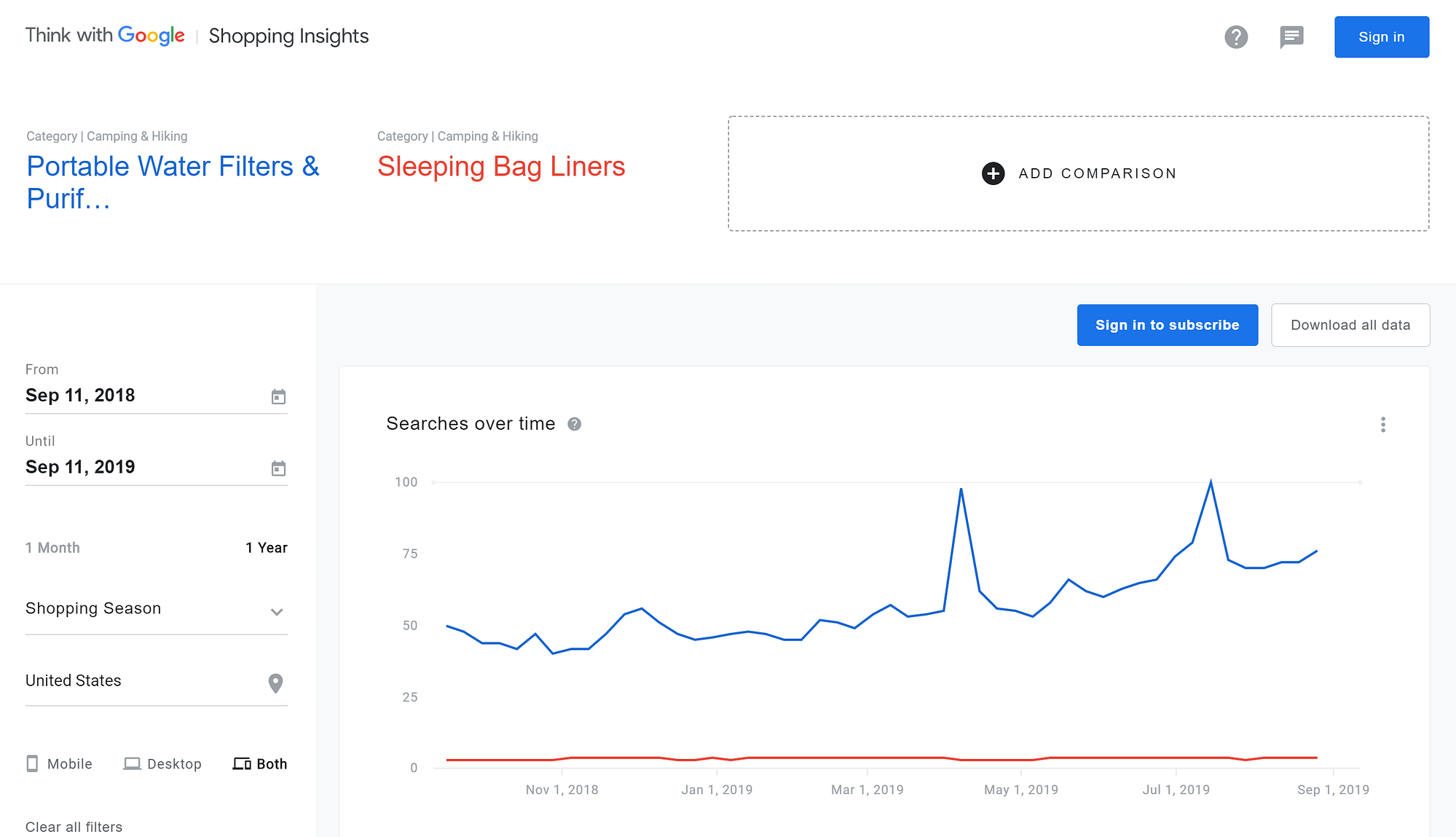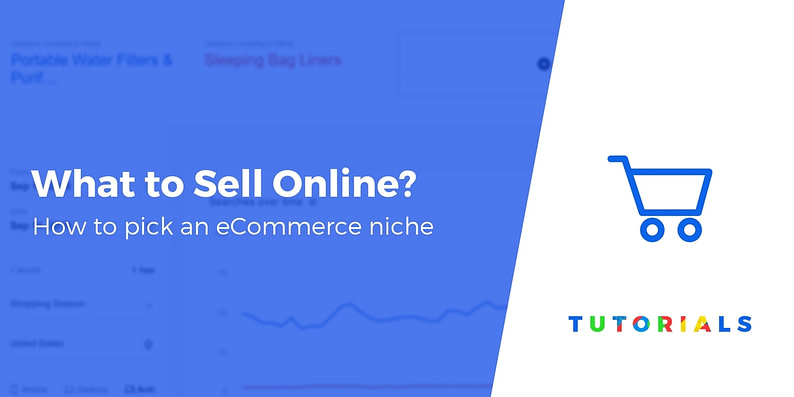Struggling with what to sell online? If you’re planning to launch an eCommerce store, finding the perfect niche for your store is the first step in your journey.
To discover a niche that works best for you, you can start by identifying some products you’re passionate about that have compelling brand potential. It also helps to determine a problem you can solve for your target market, and research the competition. This will all take some time, but help you achieve success far more quickly.
In this article, we’ll talk about why deciding what to sell online is such an important choice, and how to settle on products that work best for you by finding a strong niche. Let’s get started!
Why it’s vital to find the right niche for your eCommerce shop
Deciding what you are going to sell may be the most important choice you make for your eCommerce store. The products you offer will impact every business decision you make, determine your brand identity, and shape your target market. In other words, making a smart decision here can mean the difference between success and failure.
If this sounds like a lot of pressure, don’t worry. Finding the right niche for your store can help a lot. A niche is a specialized market with a very specific focus (in contrast with a broader market such as ‘clothing’ or ‘electronics’). Some niches can be very small, but, when it comes to eCommerce, it’s often easier to find success with a clearly-defined target audience.
For example, let’s say you sell clothing. This broad category can include all kinds of different products, from t-shirts and jackets to shoes and hats. It’s difficult to promote your store to both a 13-year-old girl looking for a unicorn t-shirt and a 30-year-old man shopping for business attire. These audiences have very little in common, so you would need to put effort into attracting both separately.
The solution to this problem is to find one niche to focus on. In this example, your niche could be mythological t-shirts or professional ties for men. These have two clear audiences, and either one can serve to narrow down your target audience and focus your marketing efforts. The trick lies in choosing the right niche for your particular store.
How to find your eCommerce niche and decide what to sell online (in 5 steps)
If you’re struggling to decide what to sell online, you may need some more information to make your choice. The following five steps will help you get started with that process.
1. Consider your interests or passions
A helpful way to begin brainstorming your niche is to think about your existing interests and passions. Consider the products you like to use now, your hobbies, and how you spend your free time. It’s much harder to sell something you don’t like or understand, so it’s useful to focus on products the resonate with you in some way.
Some of the questions you can ask yourself at this stage include:
- What topics do you like to learn about?
- How do you spend your free time?
- What organizations do you belong to?
- What areas do you have specialized skills in or knowledge about?
For example, if you love the outdoors and like to go hiking and camping often, a store focused on outdoor wear or supplies might be a perfect fit. You’ll be able to leverage your existing knowledge and passion to provide more value to the target audience for those kinds of products.
2. Do some research into potential eCommerce niches
As we mentioned earlier, having a clear niche can help you target your marketing more effectively. At this point, you can use the ideas you generated in the previous section to settle on a niche.
Let’s say you’re considering selling outdoor wear. Now you can start to think about who might be interested in this type of product, and what types of items fall into that category. For instance, outdoor wear might still be too broad a market. You could further specify your store by choosing to primarily sell backpacks or hiking boots. This will help you start to create your brand identity, and determine your target audience for marketing purposes.
If you still don’t have a particular niche in mind, it’s also worth researching what markets are currently worthwhile investments. Google’s Shopping Insights tool can be very valuable here. It lets you research specific niches and also compare how different niches are trending against one another.
The tool gets pretty specific — for example, it can tell you that the “portable water filters” niche is much more popular than the “sleeping bag liners” niche. More importantly, it can also tell you that the portable water filters niche seems to be growing, which you can see by the trend line:

3. Determine a problem you can solve for your target market
Some of the most successful online businesses found their niche because they saw a problem that needed a solution. Once you’ve settled on a potential niche, you’ll need to think about what products will best meet their needs.
If you’ve decided to sell hiking boots, for example, you may find that most of the options currently available are plain and functional. Instead of following in that vein, you can stand out by offering boots that are far more stylish and attractive to your audience.
You can find problems that may need solving by researching keywords using tools like:
You’re looking to discover popular searches that are related to your audience’s ‘pain points’ (or problems you can solve):

You can see that blisters might be a pain point for people interested in hiking shoes.
You can also come up with product ideas by talking to your target market directly, or browsing forums and social media sites where they tend to hang out.
4. Research your competition and find out how you can improve your niche
No matter how specific your niche is, you’re likely to have at least some competition. Of course, this isn’t all bad, and can provide proof that your niche has the potential to be profitable. Still, you’ll need to ask yourself how you intend to stand out from the crowd.
As you research your competition, you should keep an eye out for opportunities to do things a little differently. Maybe you can offer a higher-quality product or a new spin on an old design. Alternately, the only companies selling the same products may be dull and have very little branding. In general, people like buying from brands they can put a face to over large, corporate entities.
Your goal here is to essentially find a ‘niche within your niche’. Once you’ve determined how you can do what your competitors are doing, but a little bit better, you’ll be well placed to start attracting customers your way.
5. Generate product ideas based on your findings
Now that you’ve done your research and have plenty of information to work with, it’s time to come up with some product ideas. To do that, think about the pain points you identified during your research. For each idea you have, consider the following questions:
- Does the product fit comfortably in your niche?
- Would you use the product?
- How does it solve a problem?
- How is it different from or better than the competition?
To continue with our hiking boots example, the original idea stemmed out of a passion for the outdoors. After doing some research on outdoor products in general, we settled on hiking boots as a viable and specific niche. From there, we identified one of our target market’s problems, which is a lack of stylish options. To meet that need, our store would focus on offering footwear that is both functional and more stylish than the competition’s products.
This is just one example, but it gives you an idea of the process that’s involved. After determining your niche and settling on some products to start out with, all that’s left is to set up your online store using something like WooCommerce, Shopify, or other eCommerce platforms!
Conclusion
Starting an online business can be an intimidating prospect. However, with the right products and the perfect niche, you’ll greatly increase your chances for success.
To help you decide what to sell online, you can follow these five steps:
- Consider your interests or passions.
- Do some research into eCommerce niches.
- Determine a problem you can solve for your target market.
- Research your competition and determine how you can improve your niche.
- Generate product ideas based on your findings.
Do you have any questions about how to decide what to sell online and how to find your niche? Ask away in the comments section below!





















Or start the conversation in our Facebook group for WordPress professionals. Find answers, share tips, and get help from other WordPress experts. Join now (it’s free)!